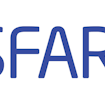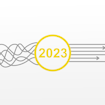
S. Wilson
Animal planet: The number of autism mouse models that deserve attention from the research community is growing rapidly.
New genetic variants that increase susceptibility to autism are emerging at a rapid pace from scans for copy number variants (CNVs) — deletions or duplications of DNA segments — and next-generation sequencing. Given the profusion of data, it seems timely to assess the availability and usefulness of mouse models in which to study these genetic risk factors.
Mouse models of human disorders are typically considered ‘valid’ based on three criteria. They have construct validity if they carry a mutation in a gene that has some support in the human genetics literature. Second, face validity reflects the fact that the mouse bears some physical or behavioral resemblance to the human disorder. Finally, predictive validity indicates a similar response to a therapy that is known to be effective in people.
The mouse models we consider here tend to have some degree of construct and face validity, and occasionally have predictive validity. Specifically, the mutations are in genes with substantial support from human genetics, and in some cases the mouse mutations precisely mimic the human risk mutations.
Face validity is considered strong if the mouse exhibits many of the core and ancillary features of autism spectrum disorders, but especially deficits in social cognition. In this regard, it is important not to set the bar too high.
In their excellent review of mouse models of psychiatric disorders, Alexander Arguello and Joseph Gogos note the uncertain path between the mutation and the observable traits when it comes to the complexities of behavior1. They argue that it will often be difficult to recapitulate all of the features of a human syndrome in a mouse carrying a single-gene mutation.
With these general caveats in mind, we note that the number of autism mouse models that deserve attention from the research community is growing rapidly.
Models galore:
Models of syndromic forms of autism include mice modeling Timothy syndrome (CACNA1C), Rett syndrome (MeCP2), fragile X syndrome (FMR1), Phelan-McDermid syndrome (SHANK3) and many others.
Cell-type-specific models of these mutations are also emerging, such as the Purkinje cell-specific knockout of TSC1, published earlier this year2. Large, multi-gene CNVs have also been successfully modeled in mice, including those at 15q11-133 and 16p11.24.
The amelioration of at least some autism-related phenotypes has also become remarkably common in mice lacking various autism-related genes, including rapamycin for PTEN5, risperidone for CNTNAP26, D-cycloserine for SHANK27 and clonazepam for SCN1A8. We might also consider understudied models, such as mice lacking EHMT19, for which strong evidence from human genetics has emerged only this year.
Each of these models offers an opportunity to learn more about the neurobiology of autism and related disorders, and about possible therapeutic interventions. That said, there are a number of obstacles that need to be overcome before they can be fully exploited, and in the remainder of this column we will outline steps that the Simons Foundation Autism Research Initiative (SFARI) is taking to address these issues.
The most obvious obstacle is the lack of general availability of certain models. The reasons for this have been well documented, and range from an understandable (if regrettable) desire to avoid competition and protect the interests of junior lab members, to the effort and expense involved in shipping mice to other labs.
Beginning with mice that were generated with SFARI funds, we have begun to address this by strengthening the language in our award policies regarding the sharing of these models. More importantly, we are collaborating with The Jackson Laboratory in Bar Harbor, Maine, to import, backcross and distribute key autism models.
For models that may be especially useful to the community, we strongly encourage investigators to send mice to The Jackson Laboratory prior to publication, which allows backcrossing to begin immediately, and at which time the mice will be shared only with approved collaborators. These mice will be available without restriction once a paper has been published.
This effort has met with some success, beginning with mice modeling the human 16p11.2 deletion and duplication, as well as those carrying mutations in SHANK3 and CNTNAP2. Others will be announced soon. Click here to read about mouse models available through this initiative.
An additional benefit of this effort is the uniformity of the lines that are established at The Jackson Laboratory. A perusal of the autism literature shows that studies published to date on a number of autism models have been carried out on mice of different genetic backgrounds. In some cases, the results are obtained in a hybrid background10; in others, an F1 generation4; in yet other cases, in fully backcrossed congenic animals6; and occasionally, in more than one congenic background3.
Having uniformly backcrossed lines of key autism mouse models should facilitate the identification of signaling pathways or neural circuits that are commonly disrupted, despite the apparent genetic heterogeneity of autism.
Behavioral focus:
Because the clinical diagnoses of autism spectrum disorders are based on behavioral and cognitive symptoms, mouse behaviors that are reminiscent of the human condition are of high interest. Indeed, some of the models listed above exhibit autism-like behaviors, including reduced social interaction, repetitive or stereotyped behavior and fewer vocalizations than in controls.
But despite the high-quality work that has been published on many autism mouse models from individual research laboratories, behavioral results from rodent models are notoriously variable across studies11.
As noted above, differences in the genetic background of the tested mice and nuances in how laboratories conduct their behavioral tests are examples of factors that contribute to the variability in results. This has made it difficult to make direct comparisons between mouse models.
In an effort to overcome these barriers, SFARI has launched two conceptually related projects within the last year that go beyond our initiative with The Jackson Laboratory.
The first will be led by Ted Abel at the University of Pennsylvania, who is the recipient of a grant from our targeted RFA on behavioral phenotyping, announced earlier this year. Second, SFARI is partnering with Roche Pharmaceuticals and the contract research organization PsychoGenics to characterize a prioritized set of mouse models using standard assays and PsychoGenics’ CubeTM Technology.
In shaping these projects, we emphasized automated data collection and analyses that are anticipated to yield an unbiased and comprehensive dataset spanning multiple developmental time-points and domains of functions (e.g., social, cognitive, neurological).
The researchers will examine any effects of strain as well as sex differences. The data, including negative results, will be widely available to the community in a timely manner; dissemination is expected to begin within one year after the start of data collection.
We are beginning with a handful of prioritized mouse models, which include the models available through SFARI’s collaboration with The Jackson Laboratory, but we anticipate adding new models as the science progresses.
Brain circuits:
A comprehensive understanding of the behavioral commonalities and differences across autism models will provide important insights into the underlying neural circuits that drive these behaviors. Data generated from SFARI-supported efforts and others have given us hints as to where to look.
These include a diverse collection of circuit elements or characteristics. For example, neurons that signal via the neurotransmitter gamma-aminobutyric acid, or GABA, seem to be important in autism, as deletion of some autism risk genes in only these neurons recapitulates the same features as when the genes are deleted from all neurons12. Other examples include gamma- and theta-frequency oscillations. These rhythms are thought to contribute to proper cognitive functioning, but show less robustness or synchrony in some autism mouse models13,14 compared with controls.
However, the exact nature by which these components, and likely many others, contribute to the etiology and developmental course of autism is still unclear. Are fundamental mechanisms disrupted in all circuits, or are problems specific to certain systems? It may be a mix of both: Dysfunction of a particular process may result in a different output depending on the circuit in which it occurs, for example.
It has been difficult to generate a cohesive conceptual framework on the neural circuitry of autism in part because the level of knowledge varies widely among the many different models. We believe that a tractable approach is to first focus on a relatively small number of mouse models with high construct validity, and then develop a deep understanding of these models by examining multiple circuits at multiple levels of analysis.
To this end, we have encouraged our investigators working on different neural circuits to focus on those available through our collaboration with The Jackson Laboratory. By layering our knowledge about these dynamic neural systems, we can begin to fill in the blanks about the complex path from genes to behavior.
Comparative expression:
This complexity is particularly reflected in the large number of seemingly unrelated genetic variants associated with autism. One of the most pressing questions is how this range of variation can result in the same phenotypes.
A widely accepted explanation is that autism-associated genes regulate intersecting molecular pathways that eventually converge to control the same cellular mechanism, such as cell division, the formation of neuronal junctions (synapses), or neuronal activity.
An important question is, at which level do the actions of autism-linked genetic alterations converge? Do they converge on a few signal transduction pathways? For example, NF1, PTEN, TSC1 and FMRP1 have been suggested to converge on the central regulation of protein translation15. Or do they affect parallel pathways that regulate a few cellular mechanisms, such as cell division or synapse formation? It is likely that to some degree, both models are true.
Gene expression changes induced by genetic variants can implicate particular molecular pathways and cellular mechanisms. Ideally, one could analyze the changes in gene expression that accompany each autism-linked genetic alteration in different parts of the human brain.
Because gene expression analysis in postmortem human brains is difficult for multiple reasons, and many autism-associated genes are conserved in the mouse, we propose that a first step could be a comparative gene expression analysis in the mouse models of the most common autism-linked mutations.
However, a large-scale gene expression screen is expensive and not necessarily guaranteed to deliver interpretable results. Because of its high cost and high-risk nature, this is an unlikely undertaking for an individual academic lab. SFARI is exploring the possibility of funding a collaborative initiative to conduct a large-scale comparative gene expression analysis of multiple mouse models of autism.
One way to do this is by RNA sequencing of multiple, well-defined brain regions known to play a role in autism, possibly even including multiple developmental stages. The results of such an initiative would be made available as a public resource to the entire scientific community, allowing researchers to apply their own analysis.
Again, our hope is that this potentially valuable resource may lead to the discovery of the points of convergence among the many genetic variants that cause susceptibility to autism and related disorders. These findings may then generate new hypotheses to be tested by academic researchers, and identify new therapeutic targets and molecular biomarkers that are shared by multiple forms of autism.
Better models:
These initiatives are primarily focused on the near term, but there are other efforts that will no doubt progress in the autism research community, and will be under consideration for support by SFARI.
Most of the models discussed above are conventional models — with deletions of certain genes — lacking the kind of spatial and temporal control that has been extremely informative in other biological contexts. New technologies are available16 that should allow for the well-controlled suppression of autism risk factors in particular regions of the brain and at particular times during development, offering new and more accurate insight into the natural history of the disorder in mice carrying known human mutations.
Sequencing exomes — the coding portions of genomes — is revealing point mutations in protein-coding genes that are strong risk factors. These will have to be modeled by approaches that introduce the specific mutations into the mouse genome, thus complementing whole-gene deletions.
In addition, under the assumption that autism is often the result of two or more mutations, efforts to generate mice that carry multiple mutations will no doubt come to the fore.
Finally, good animal models need not be limited to the mouse; much can be learned from other organisms. The community is exploring these possibilities, as evidenced by efforts over the past few years to generate genetic rat models.
We at SFARI look forward to discussions with the community as to how we can best enable the production of these critical platforms for autism research.


